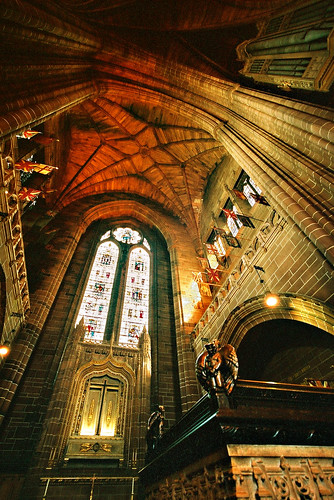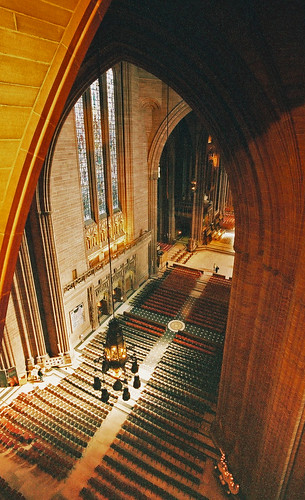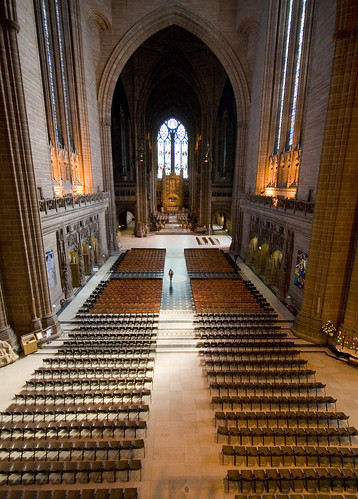Friday, December 1
Liverpool Anglican Cathedral
Some aspects--such as its rugged, even daunting chunkiness, rather suitable for a working-class town like Liverpool--date it incontestibly as a twentieth-century work; and yet, in quality of ornament it is the equal of anything produced in the Middle Ages. I'd like to post at greater length and leisure sometime in the next few weeks on the church's influence in later designs--just about any Gothic church built in the U.S. or America since was impacted by it in some way--and also about some of the odder aspects of its internal arrangement and their relationship to certain liberal and conservative transatlantic trends in the Episcopalianism of the time--and what Catholics can learn from them, both for good and for ill. Perhaps next week. Until that time, a few photos.

A view from the exterior. One of the more unusual aspects of the church is its massively oversized crossing and mammoth tower, featuring not one but two transepts. Scott's proposal originally included two facade towers and a rather strange side-elevation.

Looking towards the liturgical west end of the church, from the quire. The rather strange pulpitum that bridges the nave before the crossing is clearly visible. .

A side-altar.

Another view of the pulpitum, and its liturgically rather strange placement, bridging the nave rather than the entrance to the sanctuary.

A dramatic view of the westwerk.

The Lady Chapel.

A view of the nave from on high.

Another view of the Lady Chapel, its phenominal quasi-Teutonic altarpiece shrouded with scaffolding, sadly. A better view can be found here.

Towards the high altar. The combination of broadness and height to the nave makes it seem particularly daunting and almost disturbing, rather than the comparative intimacy one finds in the narrower naves of medieval cathedrals.
Most of these I found via Flickr, and kudos to the original photographers. A particularly good set can be found here. If anyone has any problems with me posting these, I will remove them.
Incidentally, while the present-day Liverpool Catholic Cathedral is pretty weird looking (it's been compared to a wig-wam), it does lend its basement to hosting the Liverpool Beer Festival ever February. Take from that what you will.












